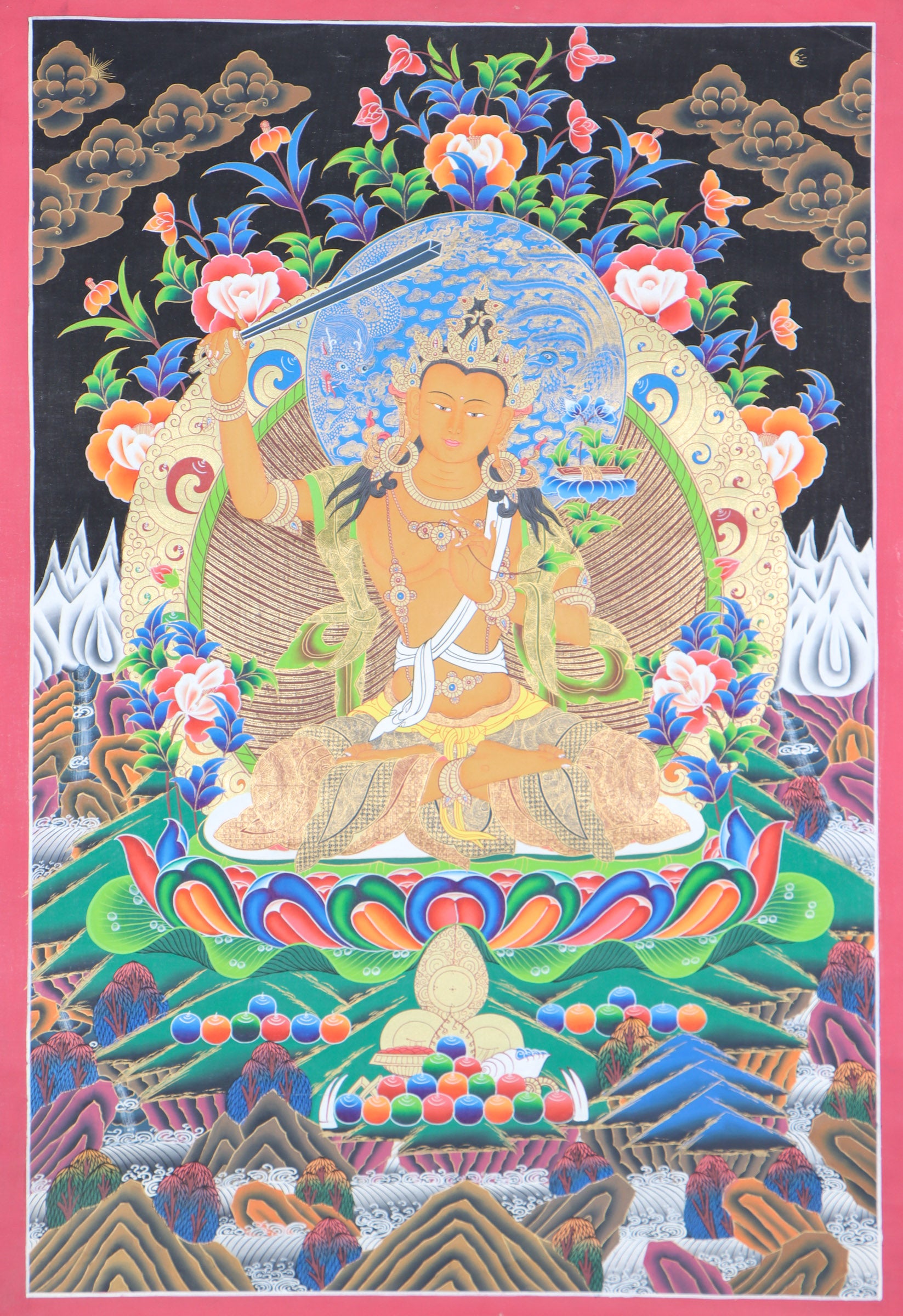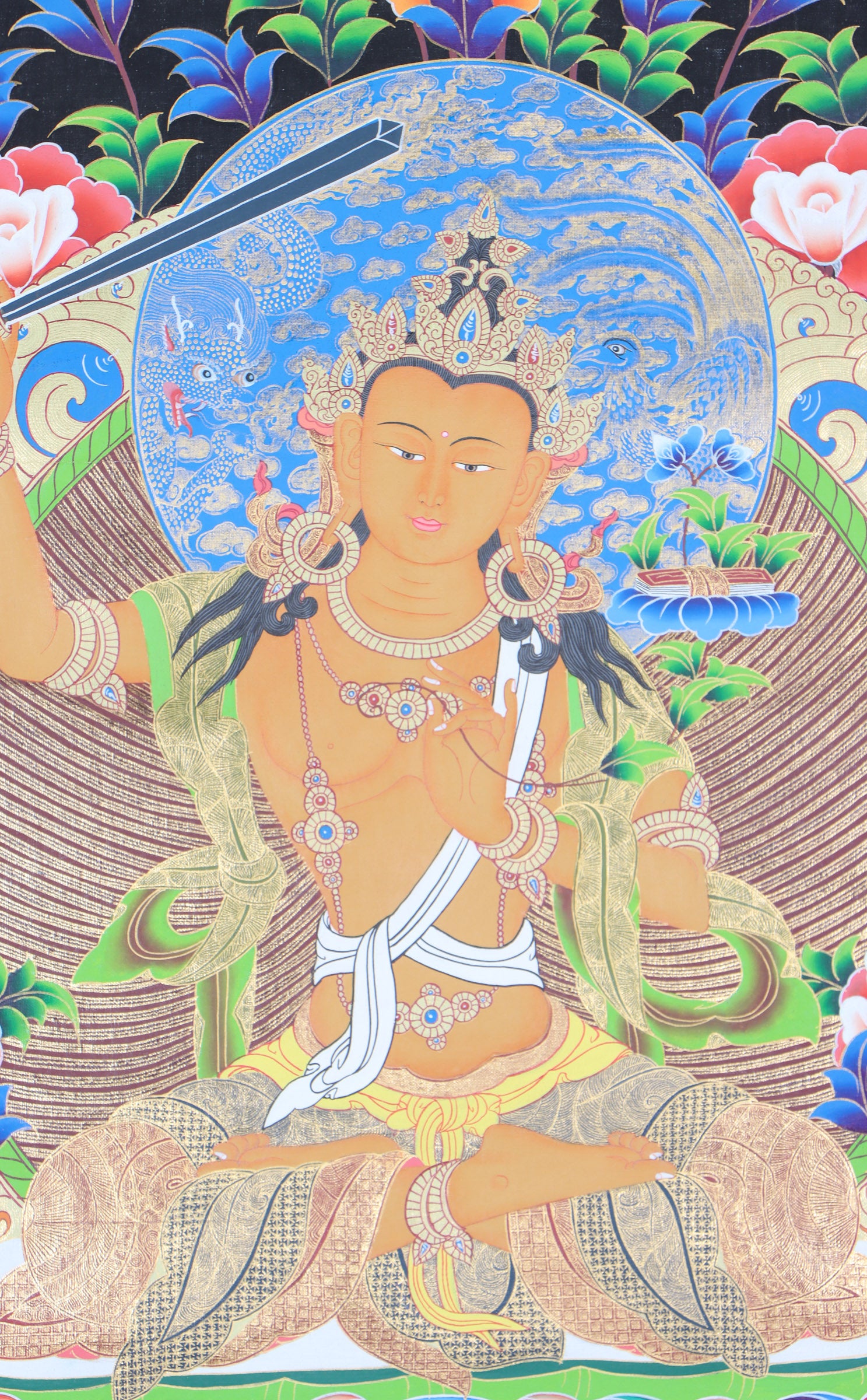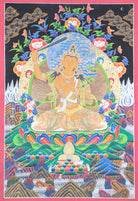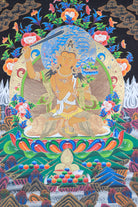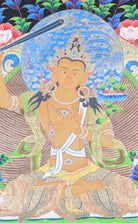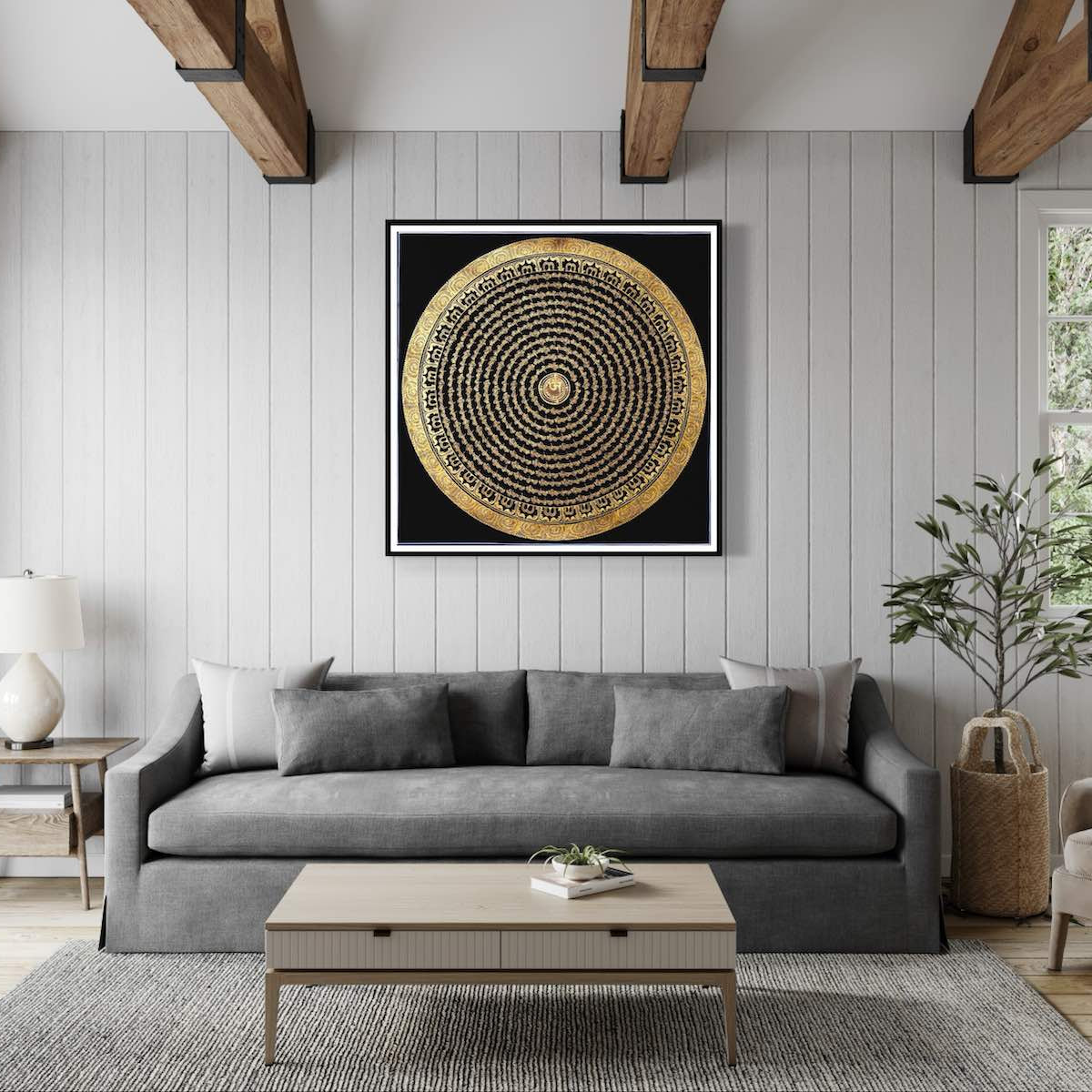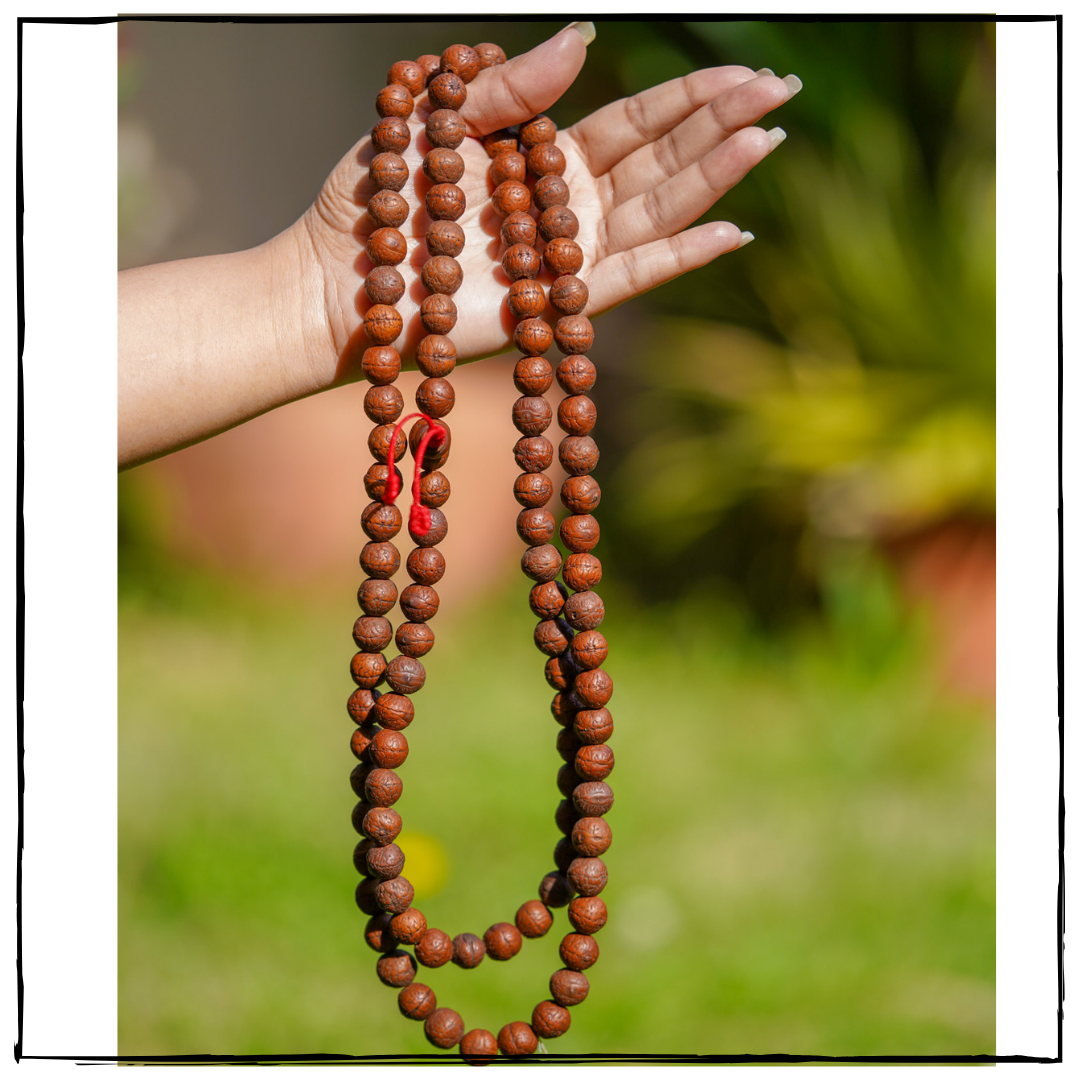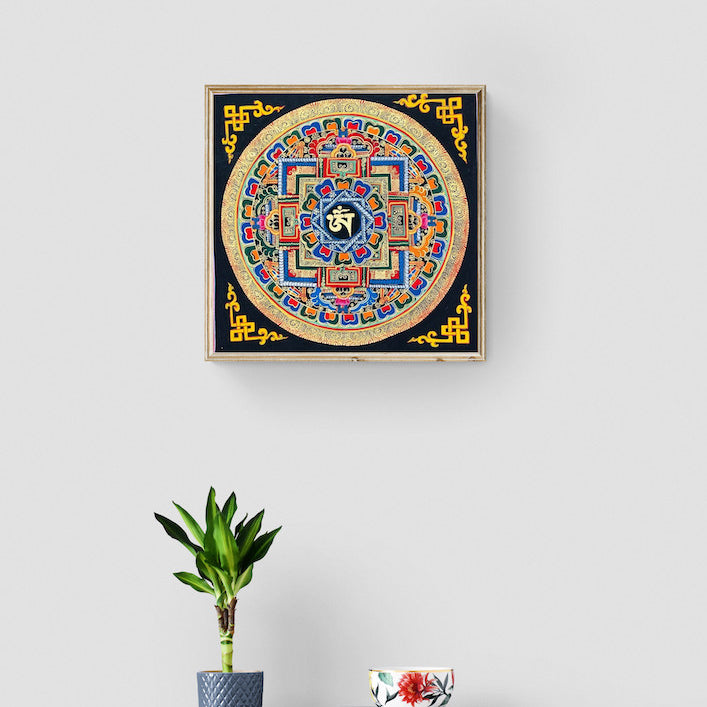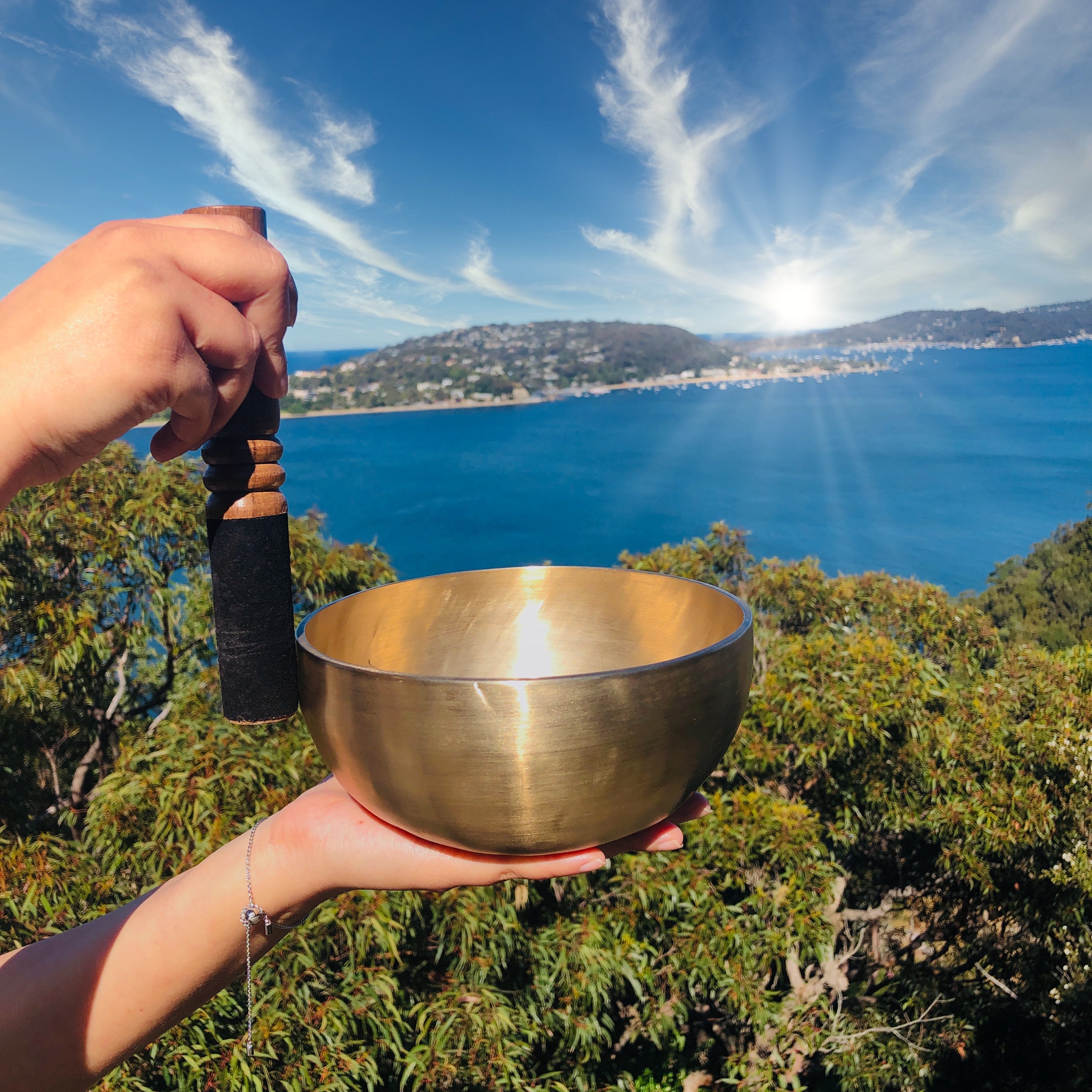Manjushri Thangka Painting
Couldn't load pickup availability
Description
Thangkas are intricate, symbolic pieces of artwork typically showcasing religious figures. Made on fabric, these works are meant to strengthen the respect of Buddhist teachings, along with one's comprehension of them. Boasting precision and vividness, Thangkas are especially appreciated for their realistic iconographic depictions.
Manjushri Thangka Painting is a complex scroll artwork, originating from Tibetan Buddhist culture and featuring Manjushri, a bodhisattva associated with wisdom. These pieces are integral to Buddhist activities, largely through their use as visual aids for meditation, instruction, and sacred practices. Manjushri is often depicted as a youthful being, brandishing both a sword and a book - the former representing the severance of ignorance and the latter denoting knowledge.
Manjushri is traditionally depicted in a serene pose atop a lotus throne, with an illuminated aura surrounding him. He holds a sword in his right hand, symbolizing his unwavering commitment to conquering ignorance and delusion. In his left hand, he grasps a book or scroll that signifies his wisdom. Additionally, the artwork is often decorated with imagery of lotuses, celestial beings, and an ornamental backdrop, all denoting Manjushri authority and teachings.
Product Specification:
- Hand Painted
- Materials: Semi-Precious Natural Minerals
- Base: Cotton Canvas
- Origination: Nepal

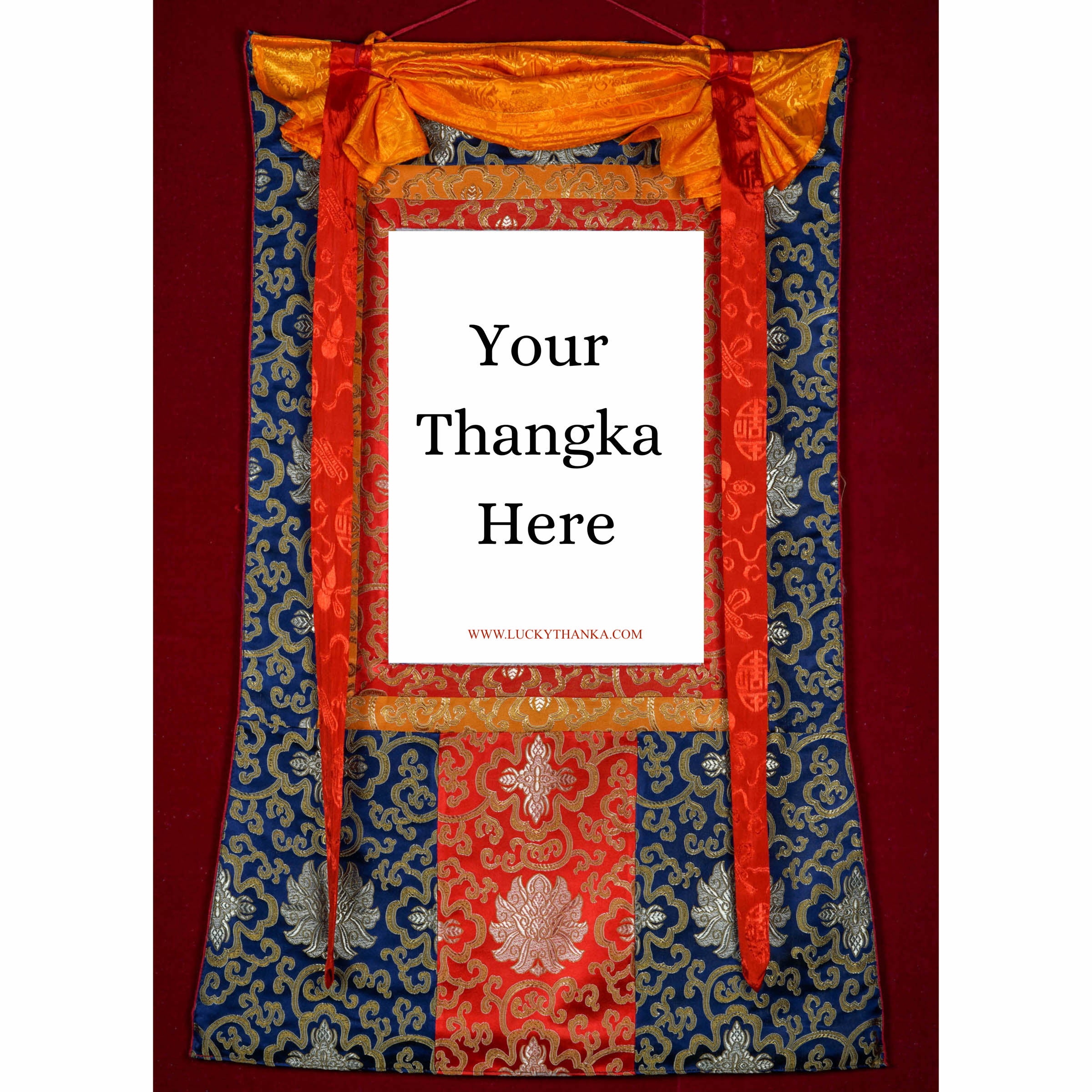
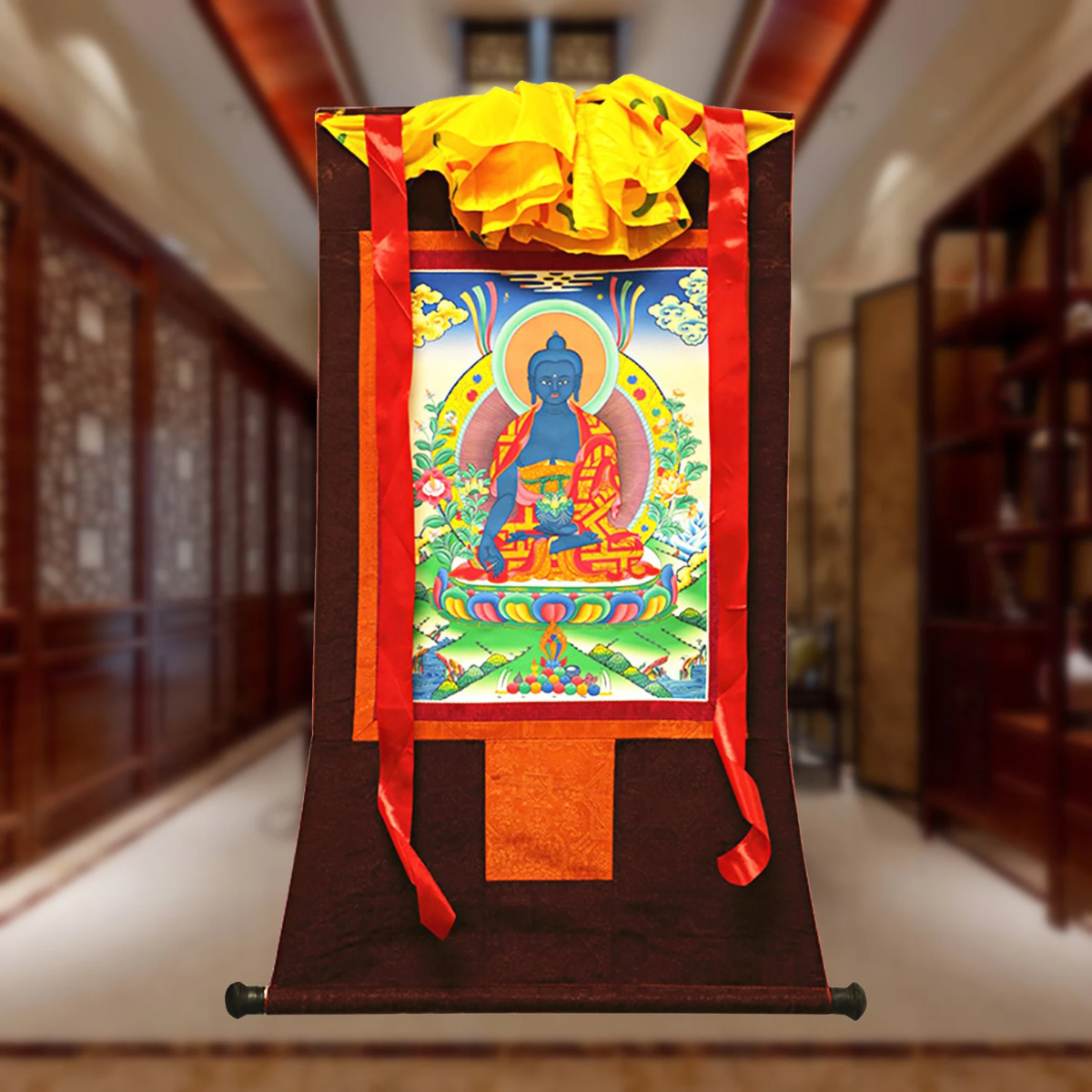
Hand Embroidery Brocade
Want to add a Brocade to your beautiful Thangka Painting? Traditional Style Brocade has been one of the most popular form of mounting as it has a greater religious merit.
Note: Make sure you have added the Thangka to your cart first.
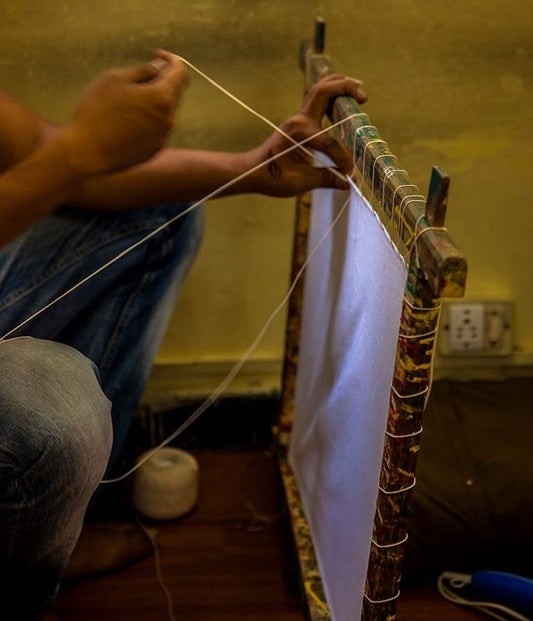
100% Cotton Canvas
Preparing the Cotton canvas before starting to paint a Thangka. This process includes washing, drying, stretching, sizing and everything needed to make a perfect base for the thangka to last for centuries.
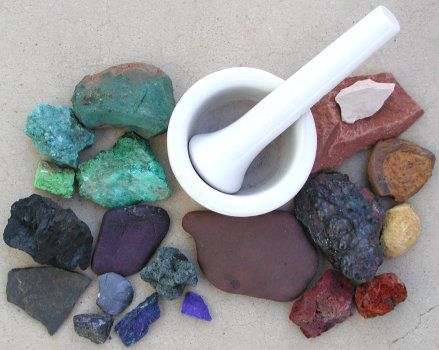
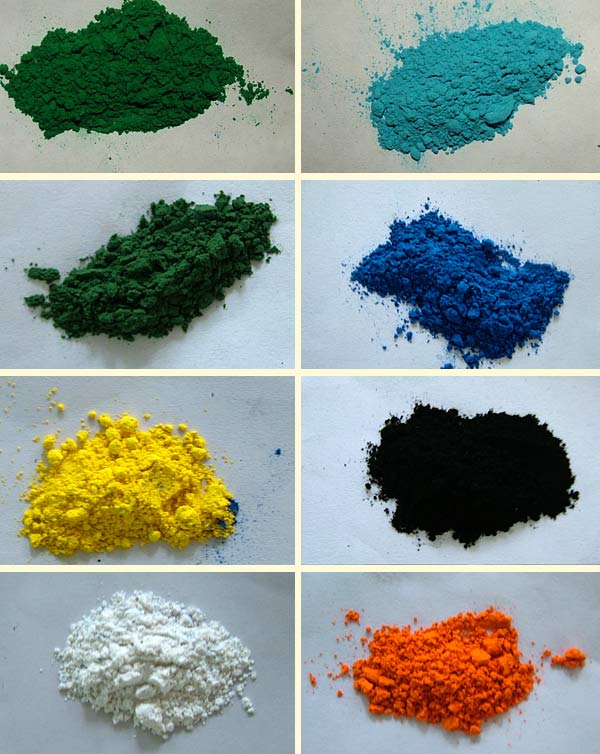
Natural Minerals
Thangka Paintings are painted using the natural minerals. These are firstly grind into the powder form and then used in the thangka as a paint.



